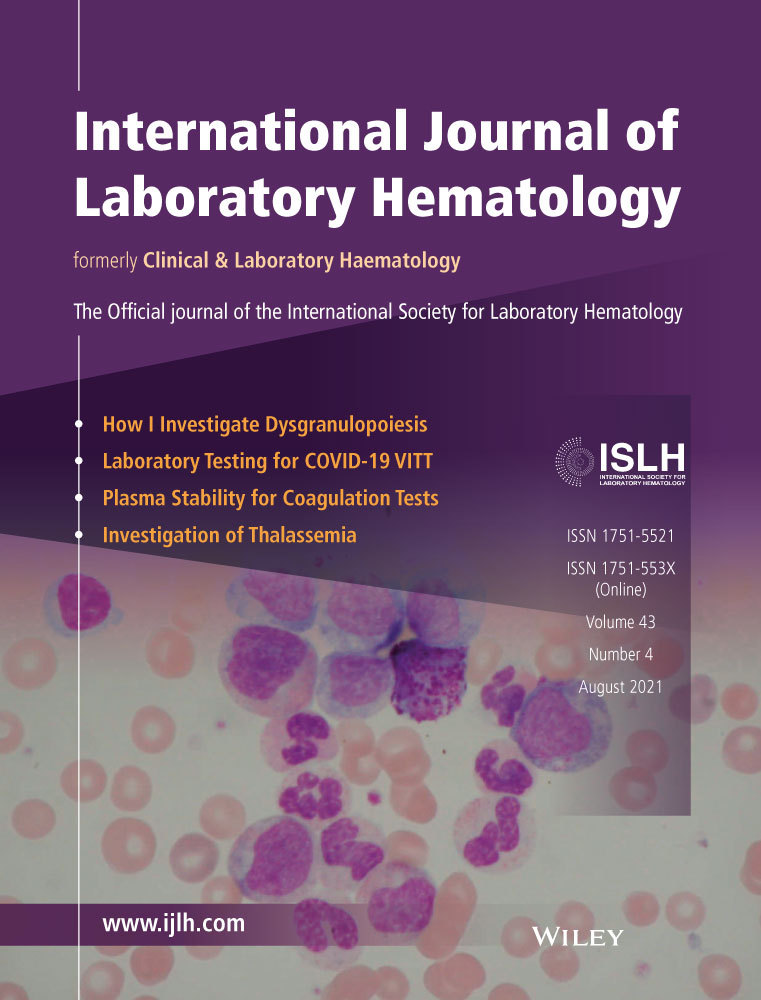Mindray BC-6800 haematological analyser: 3D-DIFF scattergram usefulness in infectious mononucleosis diagnosis
Funding information
There are nonfunders to report for this submission.
Abstract
Introduction
3D-DIFF scattergram of the Mindray BC-6800 haematological analyser shows morphological abnormalities and lymphocyte cluster splitting related to the presence of reactive lymphocytes.
This study aims to assess whether these cytographic changes are useful in detecting both activated and apoptotic lymphocytes, leading to an improvement in the laboratory diagnostic process of infectious mononucleosis.
Methods
Two hundred three samples with modified shape and doubled lymphocyte cluster of DIFF scattergram (study group) were divided into two different subgroups: with and, respectively, without serological evidence of ongoing IM. Activated and apoptotic cells in peripheral blood were counted by light microscopy or gating in the instrumental dot plots. Values of apoptotic cells counted by microscopy were compared with those resulting from gating.
Results
Samples with both shape change and doubled lymphocyte cluster had serological profiles according to the diagnosis of ongoing infectious mononucleosis. Blood smears review was positive for reactive lymphocytes in all 112 samples (100%). An underestimation of apoptotic cell count by light microscopy compared with the gating in the instrumental scatterplot was also observed (96 out of 112, 85.7%).
Conclusion
The additional lymphocyte cluster was significantly associated with activated and apoptotic lymphocytes in samples with serology suggesting ongoing infectious mononucleosis. Considering the significance of clue for infectious mononucleosis assigned to the apoptotic lymphocytes, a specific flag such as "apoptotic cells?" could be associate with the related cluster. Such a flag could be used for dedicated rules for smears review, thus increasing infectious mononucleosis detection in laboratories that do not usually practise instrumental cytograms observation.
CONFLICT OF INTEREST
The authors have no competing interests.
Open Research
DATA AVAILABILITY STATEMENT
The data that support the findings of this study are available from the corresponding author upon reasonable request.




